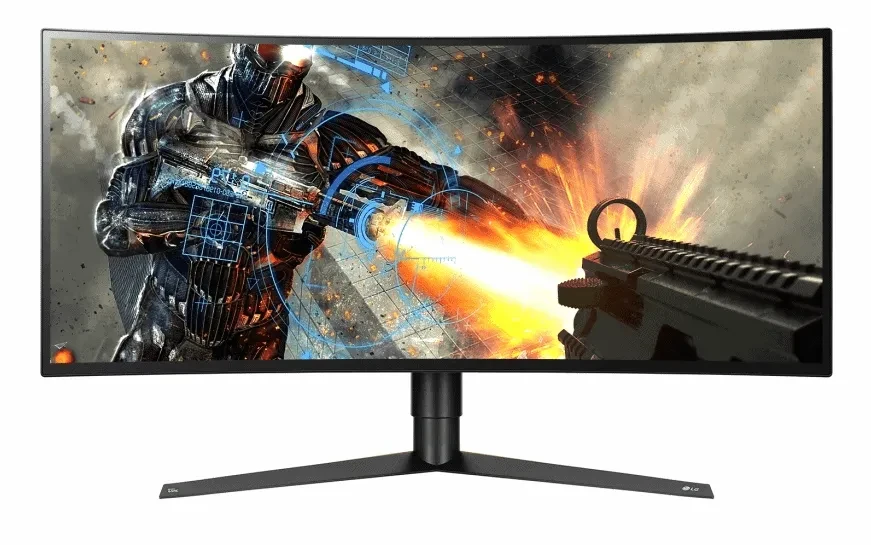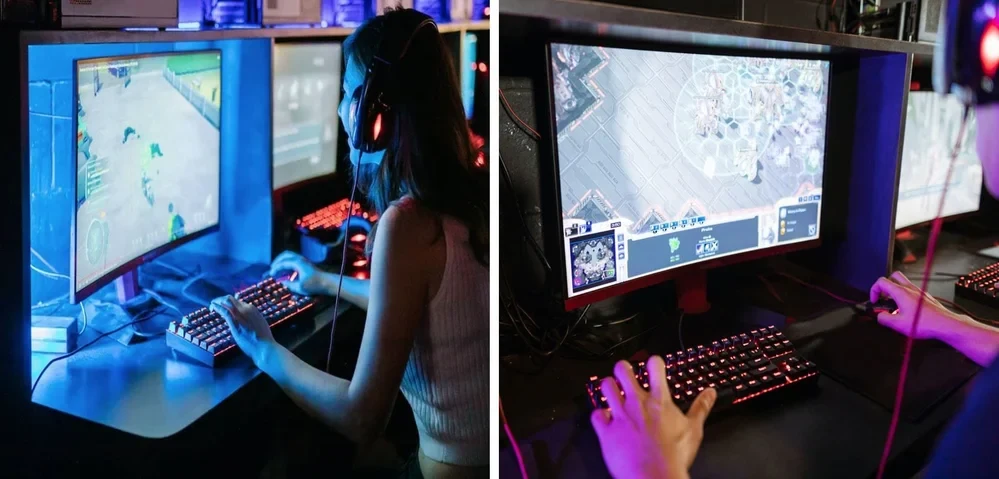When choosing a computer monitor, it’s critical to consider various factors such as price, size, resolution, refresh rate, and display aspect ratio to find a machine that meets your needs. Curved monitors, a newer technology than traditional flat monitors, have been available for a while and offer an attractive alternative.
If you are wondering, “are curved monitors good for gaming,” we’ve got you covered. Read our expert guide here for more details, in which we’ll go over things to consider before buying one, how to look for one, a comparison between them and their flat predecessors, and lastly, some of our top picks. Let’s dive in!
Things to Consider Before Buying a Curved Monitor
When purchasing a computer screen, it’s important to consider various factors such as price, size, resolution, refresh rate, and display aspect ratio.
Curved monitors, which have been on the market for a while and offer an alternative to traditional flat monitors, are now widely available from major brands at competitive prices. That means that you can often find two monitors with similar specifications that are similarly priced, regardless of whether they are curved or flat.
Finding the Best Curved Gaming Monitor

While there are other factors to consider when purchasing a monitor and answering “are curved monitors good for gaming,” there’s one element in particular that regular television and cinema screens possess which can influence your decision.
Movie theatres use curved screens because the slight arc of the screen allows for a consistent picture and viewing distance, regardless of where the viewer is sitting. This eliminates extreme viewing angles and provides a more comfortable visual experience.
As display technology has improved, curved screens have become more common in televisions and computer monitors. The design of these screens enhances audiovisual entertainment and improves the user’s experience.
When comparing curved monitors, it is important to consider the viewing angle and monitor curvature. These specifications determine the proper distance and angle at which to view the display. Curvature ratings are typically designated as a number, such as 1800R or 3000R, corresponding to the optimal viewing distance in millimetres.
For example, a monitor with a curvature of 1800R will have an optimal viewing angle when viewed straight-on at a distance of 1800mm. The larger the curvature number, the less intense the curve and the further away the monitor should be viewed from. It is important to consider these factors to ensure the best viewing experience.
Curved vs. Flat Monitors: How They Compare?
Are curved monitors good for gaming? Taking it a step further, are curved monitors good for competitive gaming?
The truth is, there is no superiority between either of the two kinds of computer screens. However, some factors can affect the overall gaming experience with each type of monitor. It is worth considering the following factors when deciding between the two screens.
Flat vs. Curved Gaming Monitors: Features


Both flat and curved screens have additional features and specifications designed for gaming. These can include different refresh rates, response times, and variations in colour reproduction and HDR quality. Ultimately, deciding between a flat or curved screen will depend on personal preferences and the specific features most important to the individual.
One potential advantage of curved screens is that they are more commonly available at wider resolutions, which may require a more powerful graphics card. However, this is something to consider for both monitors, as larger monitors and higher resolutions generally require more powerful graphics cards, no matter whether the screen is curved or flat.
Flat vs. Curved Gaming Monitors: Immersion
The most notable difference between flat and curved gaming monitors is their immersion level. Curved screens are generally more immersive, particularly in gaming, as they can wrap around your field of view and draw you into the action. This can be especially beneficial for ultrawide screens, which can replace a dual monitor setup.
Curved monitors may also offer slightly better experiences in terms of pixel use, as they are pointed directly toward the viewer’s eyes, allowing for more effective use of the entire screen. However, flat screens are not necessarily inferior, as their edges may be subject to distortion and appear less vivid.
Flat vs. Curved Gaming Monitors: Size


Curved monitors are generally wider than flat screens, which enhances immersion by encompassing the viewer’s peripheral vision. Flat screens range in size from 23 to 27 inches, while curved screens typically start at 27 inches and can be much larger.
The added width of curved monitors also adds weight, with larger ultrawide models weighing significantly more than smaller flat screens.
Thus, the size factor is a key difference between both kinds and can be a deciding factor for some individuals. Additionally, transitioning from a flat to a curved screen or vice versa can be jarring for some gamers.
Flat vs. Curved Gaming Monitors: Price Comparison
Curved monitors have historically been more expensive than flat screens, although the price gap has narrowed in recent years. However, it is still common for curved screens to carry a higher price tag, particularly for larger models, which can be as expensive as two smaller flat gaming screens.
Thus, if you’re considering investing in a curved gaming screen, it is important to budget accordingly to ensure you’ve left enough room – physically and financially – for the rest of your setup.
Benefits of a Curved Gaming Monitor
Curved monitors provide a more immersive viewing experience by wrapping the image around the gamer’s field of vision. The image appears in an arc around the viewer, allowing them to see the edges of the screen with their peripheral vision.
While these screens are primarily known for their immersive qualities, they can also offer some benefits for productivity. For example, ultrawide curved monitors may be helpful for multitasking or working on projects that require multiple tabs to be open at once. Some studies suggest that curved monitors may help reduce eye strain, which can benefit long gaming sessions.
Additionally, the curved screen can ensure that each pixel is angled towards the viewer, providing better colour consistency than a flat-screen display of the same size.
However, it’s worth noting that larger curved monitors may not display all PC games at the correct resolution, and they may not be suitable for tasks that require precise straight lines, such as art or video editing.
Top Picks
1. ASUS TUF VG328H1B

The Asus TUF Gaming VG32VQR is a budget-friendly monitor that offers excellent features for its price. With a 31.5-inch 1440p display, this monitor delivers sharp visuals, and the 1800R curve ensures that more of the screen is directed toward the viewer.
This machine features a VA panel with a 400-nit peak brightness and a high contrast ratio. The monitor also has a high refresh rate of up to 165Hz with FreeSync Premium, which helps to ensure smooth, beautiful visuals in games and other applications.
2. LG 34GK950G

The LG UltraGear 34GP950G-B is a monitor designed specifically for fast-paced gaming. It has a large, ultrawide 34-inch display with a high resolution of 3440×1440 and HDR 600 capability, which helps to make your games look vibrant and lifelike.
The monitor also has a high brightness level of 400 cd/m2 and local dimming for added contrast. It supports G-Sync Ultimate for smooth VRR performance and also includes support for FreeSync for AMD users. The display can be overclocked to a refresh rate of 180Hz, although the high quality of the display may make this unnecessary.
3. Samsung C24RG50FQR

At 24 inches, this machine’s display is on the smaller side compared to most curved monitors on the market, making it ideal for those with smaller spaces to work with. Its diminutive size is complemented by the 1800R curve, which allows the closest possible viewing distance for a gaming setup.
While its 1920 x 1080 resolution won’t outperform the other two monitors on this list, this Samsung model still delivers high-quality graphics, particularly for offline games. This is our budget pick, perfect for those who don’t have much extra cash or space on their desks but still want an immersive gaming experience.
Wrap-Up
The best gaming monitor for you will depend on your specific needs and preferences, including the types of games you play and how you use your monitor outside of gaming.
Flat-screen monitors are generally versatile and can be useful for various tasks, such as video editing and digital art. On the other hand, curved monitors can provide an extra level of immersion for games designed to take advantage of their added pixels.




